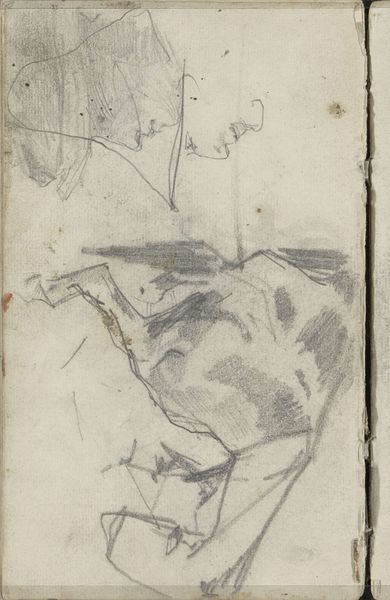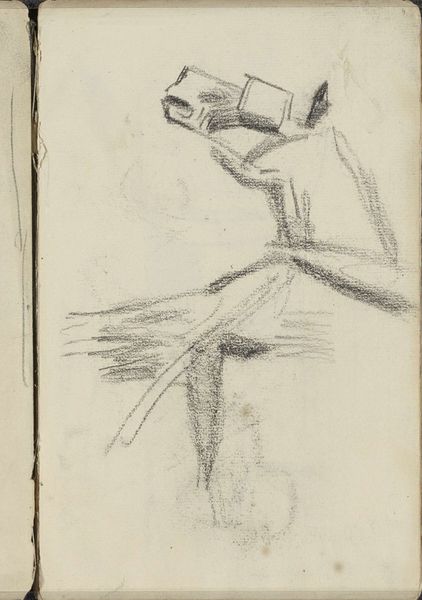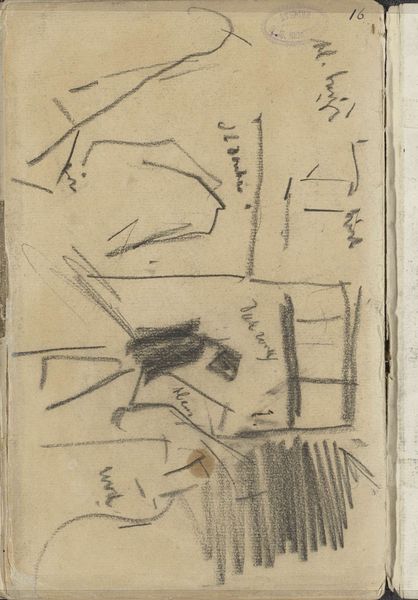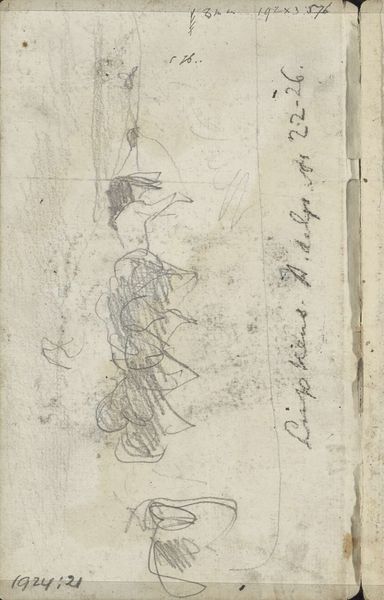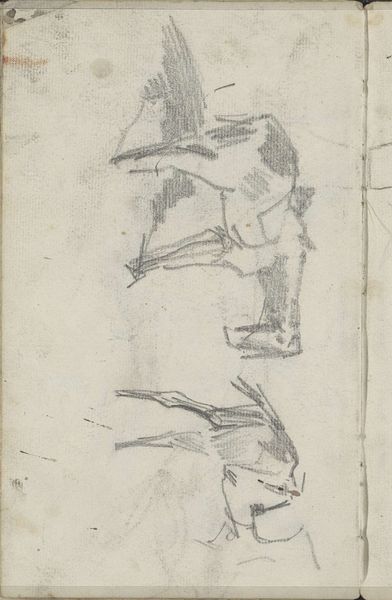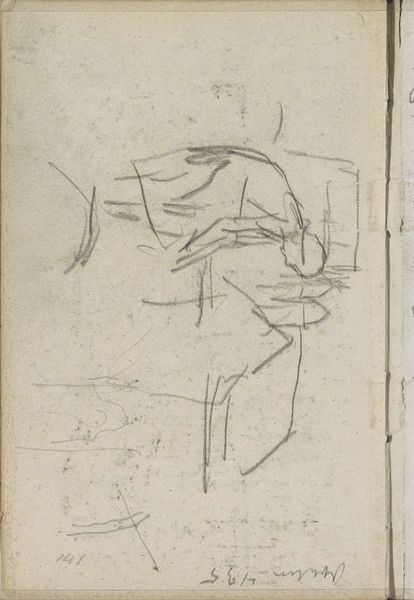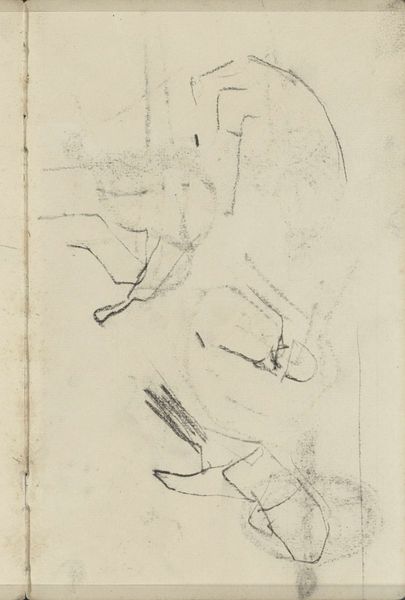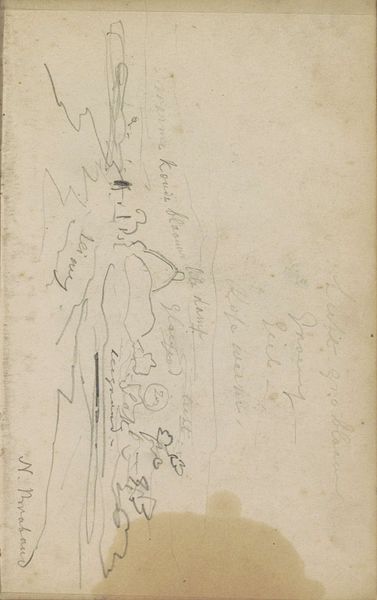
drawing, pencil, charcoal
#
portrait
#
drawing
#
pencil
#
horse
#
charcoal
#
realism
Copyright: Rijks Museum: Open Domain
Editor: This is "Two Horse Heads" by George Hendrik Breitner, likely created between 1895 and 1898 using pencil and charcoal. It strikes me as unfinished, a fleeting glimpse captured on paper. What do you see in this piece, particularly considering its historical context? Curator: The incompleteness is key. Breitner, active in a rapidly industrializing Amsterdam, offers us a glimpse into the changing relationship between humans and animals, specifically the role of horses. These aren't noble steeds of the aristocracy; they're working animals, perhaps destined for the city's bustling markets or, more tragically, the slaughterhouse. Consider the marks - rapid, almost violent. Do they evoke a sense of the horse's own constrained existence, its forced labor? Editor: I hadn't considered that. I was focused on the technique, the artist's hand, rather than the social implications of the subject matter. Curator: Exactly! The technique itself is telling. Breitner, influenced by Japonisme and photography, sought to capture fleeting moments, a realism that reflected the often-brutal realities of urban life. How does that inform your reading of the work now? Do you see something beyond the formal qualities of the drawing? Editor: I think so. Seeing it as a social commentary adds a layer of complexity I initially missed. The quick strokes now read as a hurried capture of a life quickly passing by. Curator: Precisely. This work invites us to confront uncomfortable truths about our relationship with the natural world and the labor that underpins our societies, even then. Editor: That’s a powerful reinterpretation. I appreciate the focus on its social relevance – it gives the drawing much more weight. Curator: Art constantly reflects society and offers a unique viewpoint of our historical journey and trajectory. The dialogue continues.
Comments
No comments
Be the first to comment and join the conversation on the ultimate creative platform.
